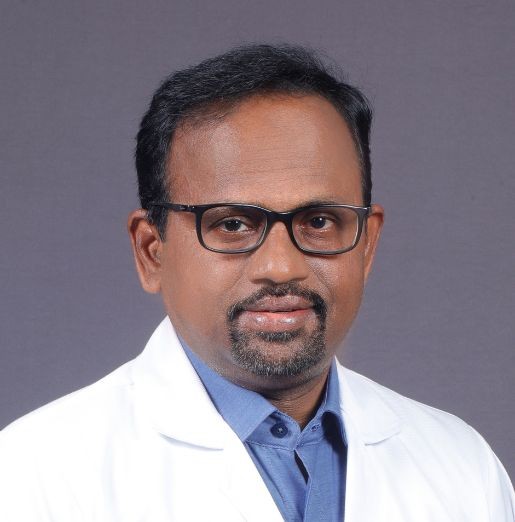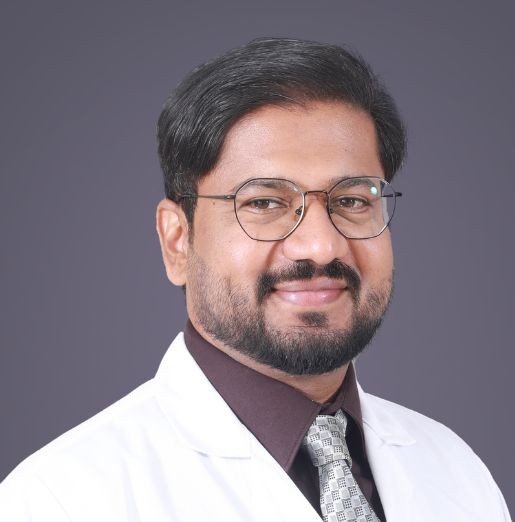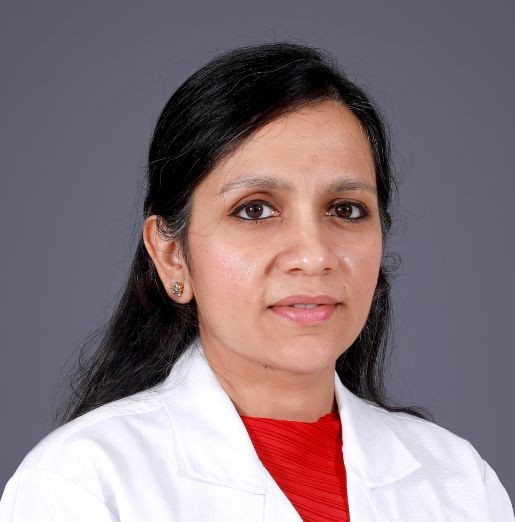Our Critical Care team focuses on giving compassionate medical services. They follow the latest advice and stick to top international standards.
We provide several specialised intensive care units to treat different needs, such as:
- Cardiac Intensive Care Unit (CICU)
- Cardiothoracic Intensive Care Unit (CTICU)
- Cardiovascular Intensive Care Unit (CVICU)
- Medical Intensive Care Unit (MICU)
- Neuroscience Intensive Care Unit (NSICU)
- Surgical Intensive Care Unit (SICU)
- Transplant Intensive Care Unit (TICU)
Critical Care Units
We run several intensive care units that provide expert care to people facing serious illnesses, major injuries or recovering from big surgeries. Each ICU team includes doctors, nurses, and other support staff. They specialise in critical care medicine while also working in areas like neurology, anesthesiology and internal medicine.
Our doctors work alongside critical care nurses, physical therapists, case managers, social workers, and respiratory therapists. Together, they focus on delivering care to patients.
The intensive care and progressive care units at our facility focus on advanced treatments to protect and save lives. These units care for patients with serious illnesses, life-threatening injuries or those recovering from complex surgeries. ICU teams, which include doctors, nurses, and other staff, receive focused training in critical care medicine along with their core specialties like anesthesiology, internal medicine, or neurology.
Leading the Way in Critical Care Medicine
In India, specialists take an additional critical care certification after completing their main field of training. All our doctors have completed this extra training in critical care after specialising in areas such as anesthesiology, internal medicine, or surgery. Many of our consultants also gained training and experience overseas in the UK or the USA. They bring this global knowledge back to enhance and standardise healthcare here at home.
We train our critical care nurses to make sure patients always get top care.
Our doctors are certified and bring expertise in anesthesiology, internal medicine, neurology and cardiac surgery. They also have deep knowledge of critical care medicine. We work with different medical specialities to provide the best possible care. Our critical care nurses receive focused training and handle the tough environment of the ICU with skill and experience.
Rapid Response Team (RRT)
An RRT team includes a critical care nurse, a nurse practitioner, a respiratory therapist, a specialist doctor and a duty doctor. The ICU consultant leads this team. The Critical Care team provides this as an Outreach service. They step in when called to assess and manage unstable ward patients. They decide whether to stabilise them in the ward or move them to the ICU. This approach reduces the chance of cardiac arrest in the ward. The ward nurse activates the RRT based on patient classification scores from established scoring tools.
If needed, the RRT can carry out emergency procedures right at the bedside such as:
- Administer ACLS
- Place arterial lines
- Perform cardioversion
- Insert central venous catheters
- Insert chest tubes
- Perform lumbar punctures
- Conduct paracentesis
- Carry out thoracentesis
- Intubate the trachea
- Offer vascular access
The Vascular Access Service (VAS) team
This includes experts who handle both inserting and managing indwelling catheters. They use an evidence-based approach to lower risks, such as infections, blood clots or central lines being placed. The main goal of VAS is to improve efficiency and patient care. The team is divided into three specialised groups with a focus on vascular access:
Central Venous Access Service: A doctor-led group installs temporary central lines, PICCs, and HD catheters.
Peripheral Venous Access Service: Senior nurses or doctors lead this team placing bedside ultrasound-guided peripheral lines while focusing on maintenance and education.
Vascular Access Service Tunnelled (VAST): Surgery and interventional radiology doctors form the VAST team. They focus on inserting tunnelled catheters like permacath to provide dialysis or deliver long-term medications.
Treatments and Procedures in the ICU
1. Airway and Breathing Support
- Airway management/Intubation – A doctor places an endotracheal tube into the airway to help with breathing.
- Mechanical ventilation – Breathing machines give life support to patients who cannot breathe on their own.
- Tracheostomy – Surgeons create a new opening in the neck to allow an airway for patients who need breathing help for a long time.
- Therapeutic bronchoscopy – This process removes mucus clogs in the airway or controls bleeding inside the airways.
- Diagnostic bronchoscopy – Doctors use this procedure to look at the airways or collect tissue or fluid samples. Thoracocentesis removes extra fluid or air from the chest using a needle or tube to make breathing easier.
2. Keeping Track of the Heart and Its Procedures
Doctors monitor the heart's activity to detect and address issues like irregular rhythms or blocked arteries. They use tools like ECGs and Holter monitors to gather data on heart performance. Some cases may require treatments like angioplasty or pacemakers to fix specific problems. These methods focus on getting the heart to work again.
- A multiparameter monitor tracks heart rate, blood pressure, oxygen levels, and how fast a person is breathing.
- Doctors use an arterial line placed in an artery to monitor blood pressure with every heartbeat in unstable patients.
- A balloon pump offers short-term heart support for cardiac patients by assisting with pumping.
- Temporary pacemakers help control irregular heart rhythms for brief periods.
- A pulmonary artery catheter collects detailed information by measuring pressures in the heart and lungs. Doctors give medications to open blood vessels or help the heart beat based on what the patient needs.
3. Taking Care of Kidneys and Body Fluids
- Continuous renal replacement therapy (CRRT) – It delivers slow and steady dialysis. Doctors use this to clear toxins in patients who are too unstable to handle regular dialysis.
- SLED: This stands for sustained low-efficiency dialysis. It helps people who cannot go through regular dialysis but are not unwell enough to require CRRT.
- IHD: Intermittent hemodialysis works for patients who are stable and can handle routine procedures.
- Hemodialysis catheter insertion – A catheter is placed to perform the different types of dialysis mentioned earlier.
- Peritoneal drain insertion – It is used to drain abdominal fluid either to diagnose a problem or to make the patient feel better by providing relief.
- Plasma exchange – Doctors replace the plasma part of blood with plasma from a donor. They are now using this method more often to get rid of toxins, take out antibodies and treat many liver patients.
4. Tests for the Stomach and Intestines
- Upper endoscopy – Doctors use a camera scope to see inside the food pipe, stomach, and the start of the small intestine.
- Colonoscopy – This helps examine the colon and rectum to find or fix issues.
- Sengstaken Blakemore / Minnesota tube: A balloon filled with air stops severe bleeding in patients with large GI bleeds.
5. Brain and Nervous System Tests
- External Ventricular Drains: Doctors insert a small tube into the Lateral Ventricle of the brain. This helps drain extra brain fluid to lower pressure inside the skull. It also allows them to measure pressure in the skull to spot increases early and take quick action.
- Intraventricular Antibiotics: These are given to patients who get brain or brain fluid infections.
- Lumbar Puncture: A doctor uses a needle to remove brain fluid from the lower back. This helps identify infections or encephalitis.
- Transcranial Doppler test – Doctors perform a painless ultrasound to track blood movement in the brain. These results help measure pressure within the skull.
6. Echocardiographic and Imaging Techniques
- Transesophageal echocardiography (TEE): Doctors place a probe in the esophagus to use ultrasound to create detailed images of the whole heart.
- Transthoracic echocardiography (TTE): This test uses external ultrasound to check the heart's structure and performance.
- Fluoroscopy: A live X-ray displays images of the body's internal layout. Doctors often rely on this during procedures like inserting lines.
- Bubble/Contrast ECHO: Agitated saline is used to spot unusual connections inside or outside the heart. Senior ECHO techs or cardiologists use 3D ECHO to collect details about unusual valves or chambers.
7. Catheter Placements and Line Procedures
- Central venous catheter placement – Doctors insert a tube into a major vein to deliver medications or fluids.
- Chest tube placement – This helps remove air, blood, or fluid trapped around the lungs.
- Foley catheter insertion – A soft rubber tube is inserted through the urethra to monitor urine output.
- Nasogastric tube insertion – A plastic tube is passed through the nose or mouth into the stomach to feed patients who cannot eat due to illness.
8. Critical Interventions and Emergency Care
- CPR (Cardiopulmonary resuscitation) – People use this method in emergencies to restart the flow of blood and breathing.
- Extracorporeal membrane oxygenation (ECMO) – This form of support helps when the heart and lungs stop functioning.
- Postoperative care – Healthcare teams give this care to monitor and aid recovery after someone has surgery.
Some of the Common Diseases Treated at the Department of Intensive Care, KIMS Hospital, Mahadevapura
1. Breathing-related Illnesses
- Acute respiratory failure – Lungs cannot supply oxygen or remove carbon dioxide as needed.
- ARDS (Acute Respiratory Distress Syndrome) – Severe inflammation in the lungs leads to fluid buildup and makes breathing fail.
- Pulmonary embolism – A blood clot blocks arteries in the lungs, reducing blood flow and oxygen levels.
- Pulmonary fibrosis – Scars form on lung tissue, making it harder to breathe.
- Pneumonia – Infection causes the air sacs in the lungs to swell and become inflamed.
- Influenza (flu) – A virus infects the respiratory system and may cause issues like pneumonia.
- COPD: Chronic obstructive pulmonary disease exacerbations
- Bronchial Asthma
2. Renal and Hepatic Conditions
- Acute kidney injury (AKI) – Kidneys stop working causing waste to build up in the body.
- Acute liver failure – The Liver stops functioning, which can become deadly.
3. Cardiovascular and Circulatory Issues
- Cardiogenic shock – The heart fails to pump enough blood and harms other organs.
- Heart failure – The heart can't pump enough blood to meet the body's needs.
- Shock (general) – Dangerous low blood flow caused by different factors.
- Septic shock – A severe drop in blood pressure due to a major infection.
- Sepsis – The body overreacts to an infection leading to organ damage.
4. Brain and Nerve Issues
- Cerebral oedema – The brain tissue swells because fluid builds up inside.
- Intracranial haemorrhage – Bleeding happens in the skull and might hurt the brain.
- Stroke – Blood flow to the brain gets blocked, which harms the tissues.
- Meningoencephalitis - Infection of Brain and Spinal cord
5. Body Chemistry and Inherited Problems
- Congenital metabolic disorder – This is a genetic issue at birth that messes with the body's metabolism.
- Metabolic disorder – This is a group of problems that disturb how the body handles chemical processes.
- Drug overdose – Taking too much of a drug poisons the body and affects many systems.
6. Conditions Affecting Multiple Organs and Critical Health Problems
- Multiple organ failure – The worsening of two or more organ systems until they stop working properly.
- Post-intensive care syndrome (PICS) – Problems with physical health, thinking, or mental well-being that occur after staying in the ICU.




